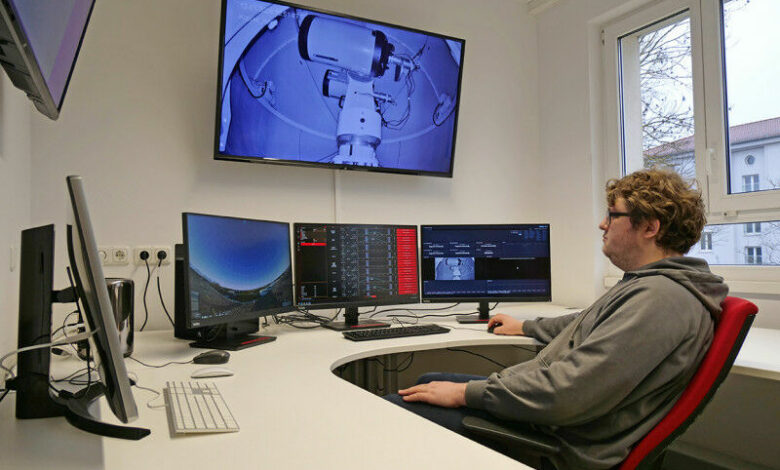Unused Telescope for Scholar’s Satellite tv for pc

A dome round 3 metres prime sits enthroned at the roof of the Geography development at the Würzburg Hubland Campus. It accommodates a telescope that scholars are the use of to build an clever sensor for satellites.
A brandnew telescope has been in operation at the Hubland Campus of Julius-Maximilians-Universität (JMU) Würzburg since January 2024. A crew of scholars is the use of it to build AI algorithms for little satellites to bring to ban collisions with field particles in orbit extra successfully than sooner than. The long-term function is for the satellites so to recognise approaching collisions independently the use of clever perceptible sensors and steer clear of them autonomously. The Federal Ministry for Financial Affairs and Power is investment the KI-SENS challenge with a just right 500,000 euros.
What Characterises the Unused Telescope
The telescope is positioned at the roof of the Geography development at the Hubland Campus. “It is able to follow the trajectory of even smaller objects particularly quickly and precisely,” explains Hakan Kayal, JMU Coach of Astronautics. For this reason the dome can be opened totally – with slower telescopes it is just discoverable a slit extensive and rotates totally.
The far flung keep an eye on for the telescope is positioned in two playgrounds on campus: at the beginning, within the challenge keep an eye on centre of Hakan Kayal’s professorship, the place additionally alternative telescopes and satellite tv for pc missions are managed. Secondly, within the rooms of the coed affiliation WüSpace e.V. through which Würzburg scholars of aerospace informatics are organised; 20 of them are running at the KI-SENS challenge.
Switch From the Telescope to a Satellite tv for pc
What are the scholars doing with the brandnew telescope? They’re the use of AI algorithms to show it to recognise little transferring items within the sky and are expecting their trajectory in order that it may observe them. “To do this, we set up a conventional object detection system and, in parallel, a second one based on AI,” explains Grasp pupil Maximilian Reigl.
The algorithms are nearest transferred to a satellite tv for pc sensor. Sooner or later, a sensor prototype might be constructed and examined in a check laboratory. The plan is to finish this paintings via the top of 2024. “If we prove that the AI sensor is highly likely to work in orbit, the next step would be a real space test,” says the aerospace informatics pupil.
Evasive Manoeuvres In the past Managed Manually
If the entirety works out, lets finally end up with an innovation from Würzburg that suggests higher protection for satellites and manned field advance. It’s because the danger of collisions with field particles is prime and continues to develop, because the Eu Area Company (ESA) emphasized in a file revealed in 2023.
“The USA maintains a large and dense observation network with which it predicts and reacts to possible collisions with space debris on a daily basis. ESA is currently building such a network,” says Hakan Kayal. Till now, the important evasive manoeuvres were managed manually via people. On the subject of the World Area Station ISS, that is important a number of occasions a era. The manoeuvres are time-consuming, building up gasoline intake and in addition building up the danger of colliding with alternative items when escape the flying trail. An clever sensor that may carry out those manoeuvres autonomously could be a vital step ahead.
Younger Ability for Area Era
The particular factor about KI-SENS is that the paintings at the challenge is being pushed ahead in large part independently via JMU scholars organised within the WüSpace affiliation. They’re supported via Coach Kayal and challenge supervisor Tobias Herbst. On this means, the scholars familiarise themselves with the method of a construction challenge in field advance from A to Z.
The greater participation of scholars in little satellite tv for pc programmes may be very noteceable to the Federal Ministry of Economics as a funder, as Hakan Kayal explains: “The aim is to further increase the attractiveness of the subject in terms of recruiting young talent.”




